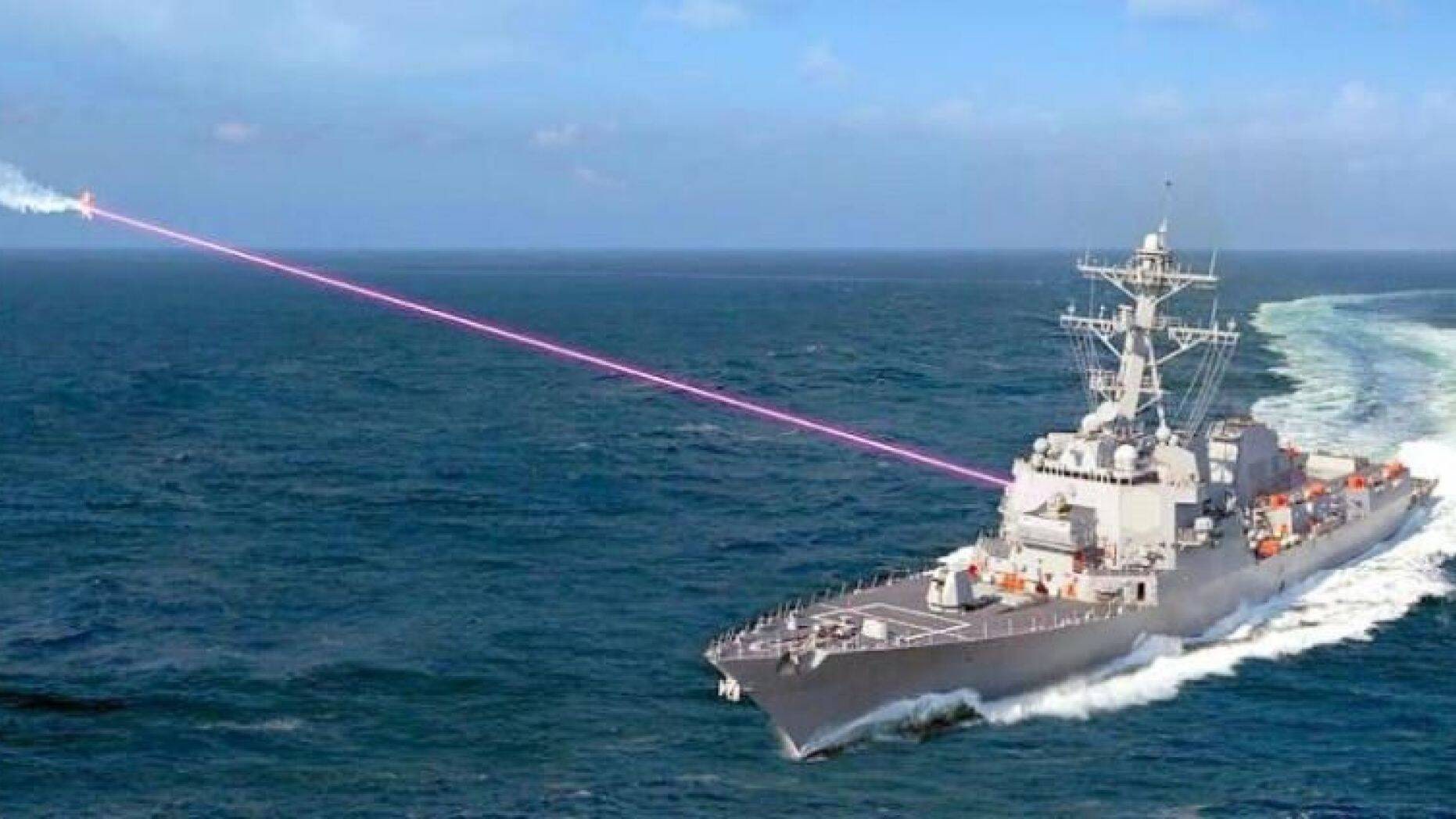
Fox News Flash top headlines are here. Check out what's clicking on Foxnews.com.
Destroyer-fired Navy lasers will soon destroy attacking cruise missiles
by Kris OsbornA salvo of incoming anti-ship cruise missiles, combined with aerial drone strikes and closer-in small boats attacking all at the same time -- presents a scenario that could cause problems for U.S. Navy surface ships.
With this in mind, the Navy continues to fast-track laser weapons to further fortify its ship-based layered defenses and even launch offensive attacks when necessary. Progress has been fast-moving and promising for service weapons developers who seek lower-cost, precision defense options to support deck-mounted guns, ship-fired interceptor missiles and even ship-launched aircraft such as Osprey helicopters or fighter jets from carriers.
Laser weapons demonstrated an ability to destroy drones years ago, however, Navy officials have been working on “power-scaling,” electronics and fiber optics to engineer lasers capable of destroying incoming cruise missiles and other large threats; combining high-power laser beams can also introduce the promise of destroying multiple incoming attacks at one time.
NAVY ARMS SEA DRONES FOR OCEAN ATTACK
“To destroy a cruise missile it takes higher power settings, longer-range attack and different types of lasers. Power levels are going up with the ability to meaningfully engage. We are doing the necessary lethality investigation. What does it take to actually kill a target?” Dave Stout - senior executive advisor, Booz Allen Hamilton, engineering fellow, Directed Energy, told Warrior in an interview.

Booz Allen has been one of several key vendors working on Navy development and engineering contracts to strengthen and improve laser weapons. Lasers have progressed quickly, and the Navy is already arming destroyers; BAH is working on technical methods of increasing high-power input to propel 100-kilowatt lasers.
“We are evaluating atmospheric effects and propagation effects, combining laser diodes and fiber amplifiers together. We are increasing the weight, the heat and the volume. Then you have to add thermal management systems.” Stout explained.
NAVY TESTS NEW SLEEK, STEALTHY DESTROYER HULL IN ROUGH SEAS
Optical fibers, Stout explained, have a lot of high-quality light and very good beam quality. “We have the means to combine many of those fibers into a single coherent output. Power drives the diode and the diode drives the fiber amplifier. The electric circuit drives the diode laser itself,” Stout said.
The Navy’s Optical Dazzling Interdictor, or ODIN laser weapon, was installed on the USS Dewey guided-missile destroyer recently, a statement from Naval Sea Systems Command said earlier this year.
The ODIN is, among other things, specifically configured to track and disable enemy drones, throwing them off course and jamming its sensors, according to a December 2019, Congressional Research Service report called Navy Lasers, Railgun, and Gun-Launched Guided Projectile:
“The weapon will also feed intelligence, surveillance and reconnaissance (ISR) data into the ship’s combat system and provide a counter-UAS (C-UAS) ISR dazzler capability. The dazzler uses a lower power setting to confuse or reduce ISR capabilities of a hostile UAS,” the report states, in reference to the Navy’s ODIN ... and a weapon now laying the foundation for a developing laser system called HELIOS, or High Energy Laser with Integrated Optical-Dazzler and Surveillance system.
CLICK HERE TO GET THE FOX NEWS APP
Laser weapons can not only incinerate enemy targets but also surveil, track and target attacking platforms as well. While ODIN and HELIOS are emerging laser weapons engineered with advanced technology for current and future applications, the Navy deployed its Laser Weapons System, or LAWs on the USS Ponce many years ago. Integration on the USS Dewey is the first time lasers have been brought into Navy destroyers. Now, the Navy has armed an amphibious assault ship with lasers as well, according to an interesting report from Seapower magazine. The Amphibious Transport Dock, the USS Portland, “disabled an unmanned aerial vehicle with a Solid State Laser Technology Maturation Laser Weapon System Demonstrator Mk2, Mod0-,” the Seapower report states.